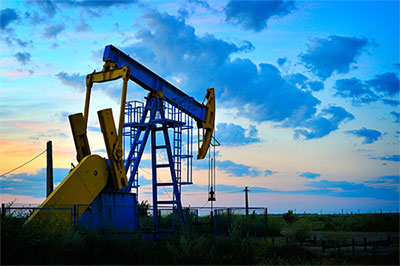 Surveillance technology has always had a key role to play in the oil and gas industry, but that role is changing. Site security remains of paramount importance and always will; however, surveillance technology has evolved, both in terms of quality and capability, so has industry mind-set regarding its application. Complete risk management is now the overarching challenge.
Surveillance technology has always had a key role to play in the oil and gas industry, but that role is changing. Site security remains of paramount importance and always will; however, surveillance technology has evolved, both in terms of quality and capability, so has industry mind-set regarding its application. Complete risk management is now the overarching challenge.
Risk Management
Complete risk management involves three main strands:
- Keeping physical assets secure;
- Maintaining site safety and operational efficiency; and
- Protecting personnel from harm.
Further still, it involves the implementation of protocols for both threat prevention and incident reaction (damage limitation).
For an industry where assets - often located in remote areas - face threats ranging from extreme physical conditions to political unrest, risk management of this nature becomes incredibly demanding.
Siloed management of disparate security, safety and operational systems leaves too many opportunities for error and ultimately creates unwanted and unnecessary inefficiency. Therefore, the only way to feasibly tackle a challenge of this scope and scale is to adopt a joined-up approach: uniting individual systems and enabling multiple levels of monitoring and control from a single, open platform. This is where intelligent surveillance monitoring and control integration can offer real benefit.
Site Security
Risk of physical attack is a concept the oil and gas industry has been familiar with for a long time. The first recorded attack on an offshore oil and gas asset dates back to 1899. Though surveillance technology may not date back quite this far, its role in preventing, detecting and responding to physical security breaches is well documented.
By intelligently integrating video with third-party access control, perimeter alarm, motion detection and other site security data within a single monitoring and control environment, greater depth of breach detection is possible, particularly over IP-networked solutions. Any anomaly, or combination of anomalies, can be programmed to automatically trigger a visual feed from relevant camera locations, enabling control room operators to investigate further and immediately assess risk.
These benefits are heightened by the fact that IP-based, networked solutions enable advanced remote access and control, for example, allowing offshore or isolated assets to be monitored and controlled from offsite command hubs. For operations with multiple region-wide or global assets this is a major advantage, particularly in a critical breach scenario.
 But, not all security threats are physical – there is a new danger.
But, not all security threats are physical – there is a new danger.
Cyber Threats
In the US, 40% of all cyber-attacks on CNI assets in 2012 were against the energy sector, and by 2018, research suggests that attacks of this nature will cost the global oil and gas industry $1.87 billion.
Here too, modern surveillance command and control systems have adapted. Integration capabilities enable any fluctuations, adjustments or variations in set IT parameters (whatever they may be controlling or storing on site) to trigger real-time alerts to either onsite or offsite control room operators. These alerts can be set to automatically display visual feed where relevant. For example, if access control settings indicate a system hack, this could immediately generate live feed from all high-risk site access point cameras, enabling operators to see if a cyber-breach is part of a wider physical intrusion threat.
A physical element may not always accompany a cyber-attack – the objective may rather be to cause system chaos. Here, integrations via a surveillance command-and-control platform still offer heightened response mechanisms, enabling operators to shut down plant areas, re-route power systems and follow guidance protocols to limit damage and threat.
Add to this the enhanced audit trail and reporting capabilities that integrated surveillance command-and-control solutions offer and it becomes clear why the sector is increasingly seeing surveillance as more than simply a visual security asset.
Site Safety
Increasingly, oil and gas operators are also turning to surveillance systems to aid site management from a safety and operational perspective.
A key trend here is asset condition or integrity monitoring. Oil and gas assets, whether on or offshore, commonly have to withstand extreme conditions, from scorching land heat to harsh, and often corrosive, sea weather.
Degradation to some degree is inevitable, particularly with aging assets, and there are multiple challenges in keeping track of potential issues. Assets likely to suffer the most are also those likely to be in the most remote locations, from pipeline segments in the desert to offshore platforms. Also, degradation does not happen at an even pace – it can be slow to occur but once it does, deterioration can be rapid.
There are also cost implications. Regular, manual checks for such installations take time and human resource, and that costs money. In challenging economic times, this is a major consideration.
Surveillance systems can play an important role. Real-time, high-resolution, high-efficiency transmission of visual data, using low bandwidths to avoid resource drain and un-necessary spend, is possible using ATEX-certified cameras that can operate in confined space, low light and at extreme minimum and maximum temperatures.
This data can be streamed to a central surveillance control center, or multiple control hubs, enabling on-going monitoring of assets that would otherwise be difficult or dangerous to carry out.
Staff Safety
Ensuring the protection and safety of human assets is also crucial. The security-related benefits outlined earlier will serve to deliver this protection to a certain level, but much more is possible.
Integrating access control and associated systems with surveillance monitoring and control, provides a much clearer picture of who is on site at any one time, and more importantly, in terms of staff safety, what their status is in relation to site incidents or activities.
For example, sensors could be set to alert security operators to any dangerous or anomalous gas levels and stream footage from cameras in the immediate vicinity to enable operators to identify staff who may be in danger. Individuals identified in those areas from the footage could have their clearance levels upgraded where appropriate, to enable them to evacuate via nearest exits.
Response team support is another possible application. In the event of an explosion, where, for example, smoke may impede vision, the surveillance system can be used to track the movement of emergency response teams and use data from thermal/low-light cameras to guide individuals safely to areas of concern; radio integration means they could also be kept up-to-date with incident developments in real time.
Minimize Investment
The oil and gas industry, like any other, is under pressure to reduce costs. While intelligently-integrated surveillance technology may help reduce and manage site risk, is it a feasible investment in today’s challenging economic climate? The answer is yes.
The interoperable nature of the latest IP-networked technology means that new and legacy systems can be brought together on one platform. Where analog cameras exist and fulfill their role, keep them. Where locations – such as high-risk, high-footfall areas – may benefit from upgrades to high definition cameras, get them. Utilize legacy products and blend them with new surveillance infrastructure as and when needed.
The fact that marrying old and new technology in this way has huge bottom line implications for oil and gas developments undergoing significant expansion or upgrade.
Reduction in the cost of technology is also a factor. Camera stations, for one, are more cost-effective than ever before; particularly multi-task cameras that offer day (color), night (mono) and thermal imaging capabilities. This fact has already seen an upturn in usage within the oil and gas market, and in marine applications, most notably in relation to GPS and radar integrations that enable absolute positioning that could be used for piracy defense.
There are few industries where risk management is so important. Get it wrong in the oil and gas industry and the potential impact on life, the environment and the global economy could be huge.
Surveillance technology has always helped from a security and process monitoring perspective. Now, it can do much more. Heightened integration capabilities – particularly using HD, IP-based solutions – mean that oil and gas companies can increasingly view surveillance as a complete information management resource with significant risk management applications. With solutions evolving to be ever more sophisticated, it’s a trend we’re likely to see more and more.